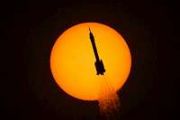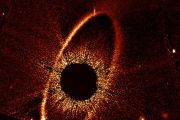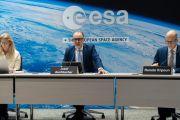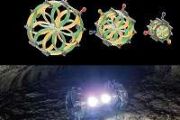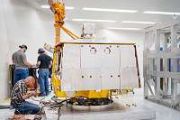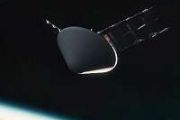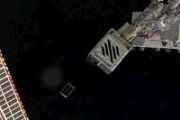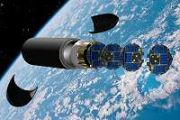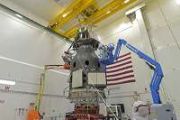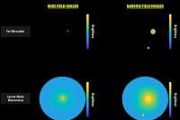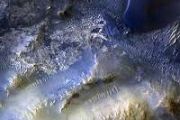
Copernical Team
Two new rocky worlds around an ultra-cool star
 An international research team, with the participation of the University of Bern and the National Centre of Competence in Research (NCCR) PlanetS, discovered two "super-Earth" exoplanets. One is located at just the right distance from its star to potentially hold liquid water on its surface.
Most of the planets that have been discovered around other stars - also known as exoplanets - are b
An international research team, with the participation of the University of Bern and the National Centre of Competence in Research (NCCR) PlanetS, discovered two "super-Earth" exoplanets. One is located at just the right distance from its star to potentially hold liquid water on its surface.
Most of the planets that have been discovered around other stars - also known as exoplanets - are b SPECULOOS discovers a potentially habitable super-Earth
 An international team of scientists, led by Laetitia Delrez, astrophysicist at the University of Liege (Belgium), has just announced the discovery of two 'super-Earth' type planets orbiting LP 890-9. Also known as TOI-4306 or SPECULOOS-2, this small, cool star located about 100 light-years from our Earth is the second coolest star around which planets have been detected, after the famous TRAPPIS
An international team of scientists, led by Laetitia Delrez, astrophysicist at the University of Liege (Belgium), has just announced the discovery of two 'super-Earth' type planets orbiting LP 890-9. Also known as TOI-4306 or SPECULOOS-2, this small, cool star located about 100 light-years from our Earth is the second coolest star around which planets have been detected, after the famous TRAPPIS NASA taps Axiom Space for first Artemis lunar spacesuits
 NASA has selected Axiom Space to deliver a moonwalking system for the Artemis III mission, which will land Americans on the surface of the Moon for the first time in over 50 years. This award - the first one under a competitive spacesuits contract - is for a task order to develop a next generation Artemis spacesuit and supporting systems, and to demonstrate their use on the lunar surface during
NASA has selected Axiom Space to deliver a moonwalking system for the Artemis III mission, which will land Americans on the surface of the Moon for the first time in over 50 years. This award - the first one under a competitive spacesuits contract - is for a task order to develop a next generation Artemis spacesuit and supporting systems, and to demonstrate their use on the lunar surface during Glaciers flowed on ancient Mars, but slowly
 The weight and grinding movement of glaciers has carved distinctive valleys and fjords into Earth's surface. Because Mars lacks similar landscapes, researchers believed ancient ice masses on the Red Planet must have been frozen firmly to the ground. New research suggests they were not stuck in place, but just moved very slowly.
Motion is part of the definition of a glacier. On Earth, meltw
The weight and grinding movement of glaciers has carved distinctive valleys and fjords into Earth's surface. Because Mars lacks similar landscapes, researchers believed ancient ice masses on the Red Planet must have been frozen firmly to the ground. New research suggests they were not stuck in place, but just moved very slowly.
Motion is part of the definition of a glacier. On Earth, meltw Space launch from Australia to use satellite tracking from Inmarsat
 Inmarsat, the world leader in global, mobile satellite communications has signed an agreement with Gilmour Space Technologies to support space launches from Australia using Inmarsat's InRange system. Gilmour Space is Australia's leading launch services company that is developing orbital-class launch vehicles and satellite platforms.
InRange from Inmarsat provides rapid, responsive and cost
Inmarsat, the world leader in global, mobile satellite communications has signed an agreement with Gilmour Space Technologies to support space launches from Australia using Inmarsat's InRange system. Gilmour Space is Australia's leading launch services company that is developing orbital-class launch vehicles and satellite platforms.
InRange from Inmarsat provides rapid, responsive and cost Ariane 5 launches EUTELSAT KONNECT VHTS satellite
 On Wednesday, September 7th, 2022 at 6:45 pm local time, an Ariane 5 launcher, operated by Arianespace, successfully lifted off from Europe's Spaceport in Kourou, French Guiana (South America), carrying the EUTELSAT KONNECT VHTS telecommunications satellite.
"With yet another successful launch, Arianespace is proud to have placed in orbit, for the 37th time since 1983, a satellite for the
On Wednesday, September 7th, 2022 at 6:45 pm local time, an Ariane 5 launcher, operated by Arianespace, successfully lifted off from Europe's Spaceport in Kourou, French Guiana (South America), carrying the EUTELSAT KONNECT VHTS telecommunications satellite.
"With yet another successful launch, Arianespace is proud to have placed in orbit, for the 37th time since 1983, a satellite for the Scotland's space sector set to become greenest on Earth
 Scotland's space sector has declared its commitment to reducing its impact on the environment through the publication of a new sustainable space roadmap, the first of its kind on Earth.
The new roadmap sets out the steps needed to achieve the long-term goals of Scottish space missions, which are to be space debris neutral, zero emissions created from on-the-ground activities, and for Scotl
Scotland's space sector has declared its commitment to reducing its impact on the environment through the publication of a new sustainable space roadmap, the first of its kind on Earth.
The new roadmap sets out the steps needed to achieve the long-term goals of Scottish space missions, which are to be space debris neutral, zero emissions created from on-the-ground activities, and for Scotl Europe's tallest ever communications satellite launched
 The fourth Spacebus Neo satellite to benefit from ESA's Neosat programme has launched into space on board the second Ariane 5 launch mission of 2022. The 8.9 metre, three-storeys-high communications satellite - which will deliver high-speed broadband and in-flight connectivity across Europe for its operator, Eutelsat - weighs 6.525 tonnes and accounted for 99% of the 6.62-tonne launch mass.
The fourth Spacebus Neo satellite to benefit from ESA's Neosat programme has launched into space on board the second Ariane 5 launch mission of 2022. The 8.9 metre, three-storeys-high communications satellite - which will deliver high-speed broadband and in-flight connectivity across Europe for its operator, Eutelsat - weighs 6.525 tonnes and accounted for 99% of the 6.62-tonne launch mass. Sidus Space executes multiple launch agreement with SpaceX
 Sidus Space, Inc. (NASDAQ:SIDU), a Space-as-a-Service satellite company focused on mission critical hardware manufacturing; multi-disciplinary engineering services; satellite design, production, launch planning, mission operations; and in-orbit support, has announced that it has signed a launch agreement with SpaceX for five launches, beginning in early 2023.
Sidus Space has designed and i
Sidus Space, Inc. (NASDAQ:SIDU), a Space-as-a-Service satellite company focused on mission critical hardware manufacturing; multi-disciplinary engineering services; satellite design, production, launch planning, mission operations; and in-orbit support, has announced that it has signed a launch agreement with SpaceX for five launches, beginning in early 2023.
Sidus Space has designed and i Surrey Satellite opens new Australian office
 SSTL has announced that on the 13th September it will open an office in Australia in Adelaide. The announcement follows the meeting on Friday 2nd September between the Rt. Hon Anne-Marie Trevelyan MP (UK Secretary of State for Trade) and Senator The Hon Don Farrell (Australian Minister For Trade and Tourism) during which they discussed ways of strengthening the United Kingdom - Australia economi
SSTL has announced that on the 13th September it will open an office in Australia in Adelaide. The announcement follows the meeting on Friday 2nd September between the Rt. Hon Anne-Marie Trevelyan MP (UK Secretary of State for Trade) and Senator The Hon Don Farrell (Australian Minister For Trade and Tourism) during which they discussed ways of strengthening the United Kingdom - Australia economi 
